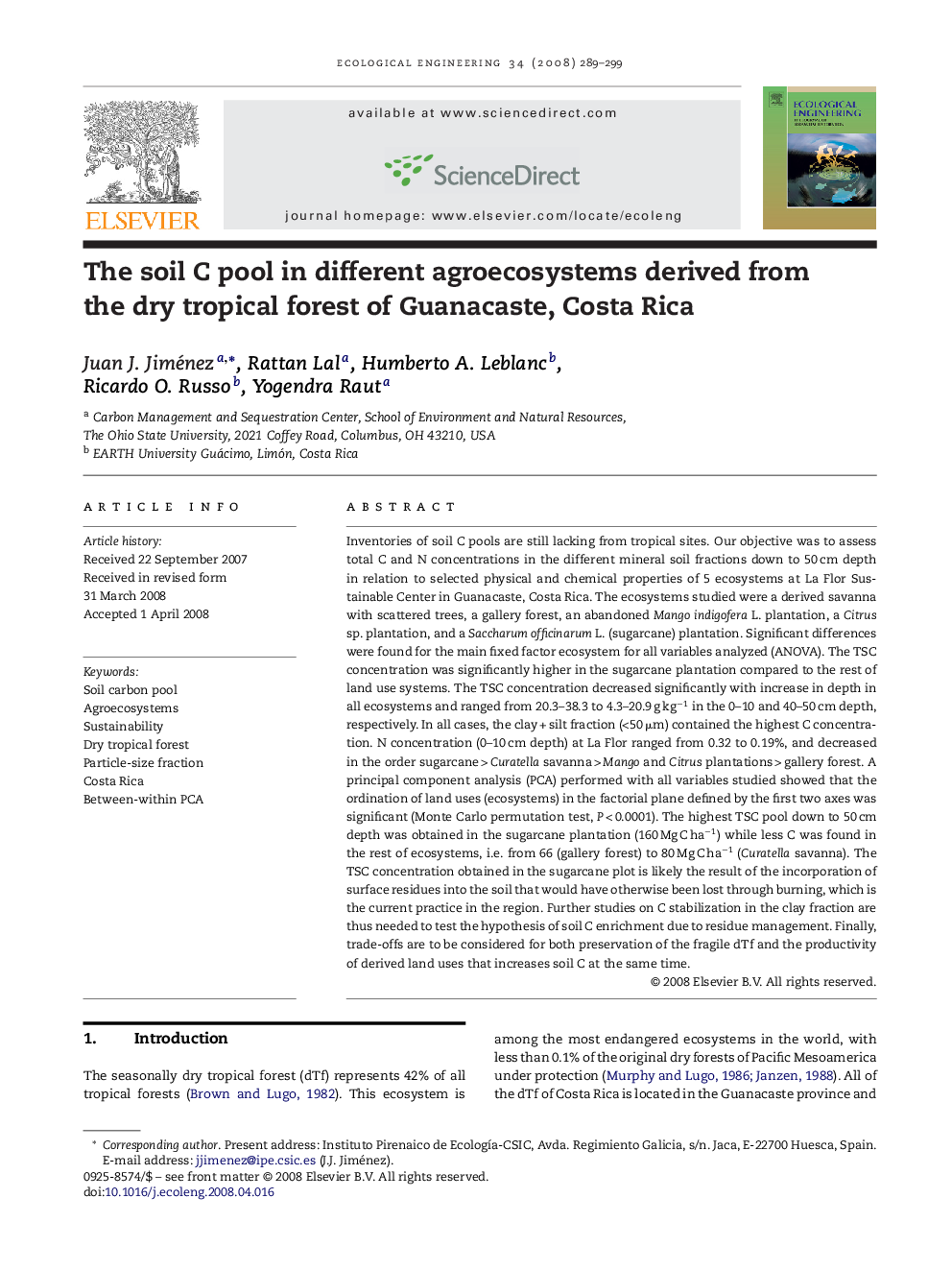| Article ID | Journal | Published Year | Pages | File Type |
|---|---|---|---|---|
| 4390690 | Ecological Engineering | 2008 | 11 Pages |
Inventories of soil C pools are still lacking from tropical sites. Our objective was to assess total C and N concentrations in the different mineral soil fractions down to 50 cm depth in relation to selected physical and chemical properties of 5 ecosystems at La Flor Sustainable Center in Guanacaste, Costa Rica. The ecosystems studied were a derived savanna with scattered trees, a gallery forest, an abandoned Mango indigofera L. plantation, a Citrus sp. plantation, and a Saccharum officinarum L. (sugarcane) plantation. Significant differences were found for the main fixed factor ecosystem for all variables analyzed (ANOVA). The TSC concentration was significantly higher in the sugarcane plantation compared to the rest of land use systems. The TSC concentration decreased significantly with increase in depth in all ecosystems and ranged from 20.3–38.3 to 4.3–20.9 g kg−1 in the 0–10 and 40–50 cm depth, respectively. In all cases, the clay + silt fraction (<50 μm) contained the highest C concentration. N concentration (0–10 cm depth) at La Flor ranged from 0.32 to 0.19%, and decreased in the order sugarcane > Curatella savanna > Mango and Citrus plantations > gallery forest. A principal component analysis (PCA) performed with all variables studied showed that the ordination of land uses (ecosystems) in the factorial plane defined by the first two axes was significant (Monte Carlo permutation test, P < 0.0001). The highest TSC pool down to 50 cm depth was obtained in the sugarcane plantation (160 Mg C ha−1) while less C was found in the rest of ecosystems, i.e. from 66 (gallery forest) to 80 Mg C ha−1 (Curatella savanna). The TSC concentration obtained in the sugarcane plot is likely the result of the incorporation of surface residues into the soil that would have otherwise been lost through burning, which is the current practice in the region. Further studies on C stabilization in the clay fraction are thus needed to test the hypothesis of soil C enrichment due to residue management. Finally, trade-offs are to be considered for both preservation of the fragile dTf and the productivity of derived land uses that increases soil C at the same time.
